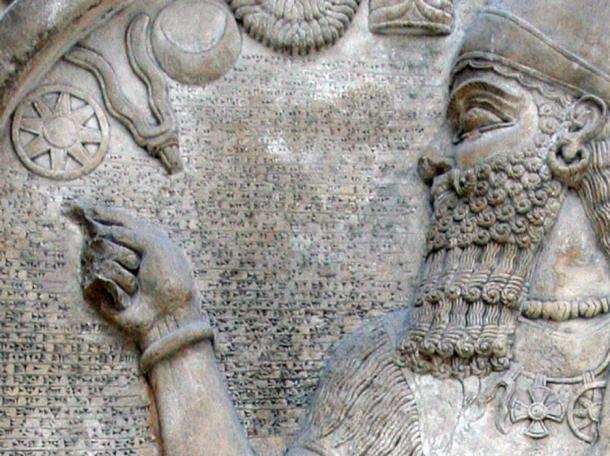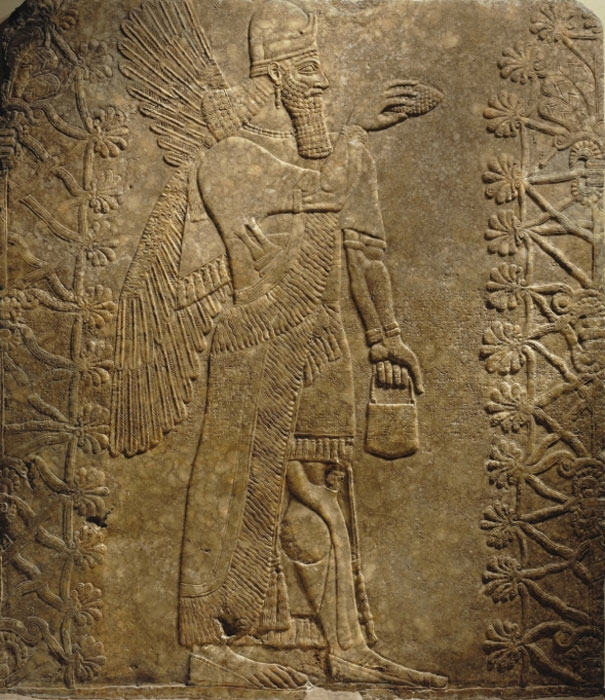Toroid
Founding Member
A seven foot tall Assyrian stone relief that's believed to be 3000 years old sold for $31 million.
$31 Million Assyrian Relief is Causing a Great International Controversy
www.youtube.com/watch?v=lKKi5yyAZLg
www.youtube.com/watch?v=NTaRa0nKiCs
$31 Million Assyrian Relief is Causing a Great International Controversy
A rare Assyrian stone relief has been sold in New York for the record-breaking price of $31 million, destroying the previous highest selling price for a piece of Assyrian art. Museums and collectors from all over the world engaged in a bidding war for this rare work of art resulting in tripling the estimated sale price of $10 million. The auction is one that was very controversial, as the work of art is being claimed by the government of Iraq. Many believe that the item is a stolen antiquity and should not be sold but returned to its original home.
The Assyrian panel
The relief is believed to be approximately 3000 years old and is from the Assyrian culture . The Assyrians were a war-like, Semitic-speaking people, whose homeland was in Mesopotamia and who came to dominate much of the Middle East. There are still Assyrians who live in modern-day northern Iraq, who have suffered greatly in recent years under the so-called Islamic State. The panel was once on the walls of one of the palaces of the King Ashurnasirpal II (883 to 859 BC), who during his reign conquered a large area of modern Turkey and Syria.

Detail of stele of Ashur-nasir-pal II in the British Museum, London. Assyria, 9th century BC. ( Public Domain )
The relief is 7 feet (2 meters) high and is exquisitely carved and was once painted. According to the Daily Telegraph , the relief ‘depicts an Apkallu, a winged half-man demigod, carrying a bucket and a cone which signified fertility and protection of the king’. Many experts believe that it is one of the finest Assyrian, artifacts to come onto the antiquities market in recent years.
The artwork was found near modern-day Mosul by the British archaeologist Sir Austen Henry Layard, who made many important discoveries related to the Assyrian Empire. He had the permission of the Ottomans who ruled Iraq at this time, to conduct excavations. During this period many archaeological items were taken from the Ottoman Empire and sold or donated to western museums.
- Gas Engineer’s Large Collection of Ancient Rings May Fetch $130000 at UK Auction
- Ancient Silk Shirt from a Fallen Empire is Set to Fetch a Bundle at Auction
- The 10 Most Expensive Antiques Ever Sold at Auction

A Winged Genie relief, f rom Nimrud, Assyria (modern-day Iraq) has been sold for $31 million in New York. Neo-Assyrian Period. (Image: Brooklyn Museum )
The controversy over ownership of the panel
The sale is controversial because many believe both in the Middle East and in America that the items does not legally belong to the seminary. They argue that the item was illegally taken, and it should be returned to Iraq. They believe that the Assyrian people have a moral claim to the artwork and that the relief should be returned to them and many on social media support this view. The Iraqi Ministry of Culture urged international bodies, such as UNESCO to halt the sale but to no avail. The Ministry argued that the Ottomans did not have the authority to permit the export of the antiquity and that it legally belongs to the Iraqi people.
Christies, who managed the auction of the Assyrian artwork have, according to RT, stated that there ‘is no legal basis for any foreign nation to claim ownership of the ancient artifact’. The British Auction House assert that the panel was legitimately secured on the open market and that the sale of the artwork is legal. On this basis, the auction went ahead and the panel smashed the world record for an Assyrian artwork. The previous record for an Assyrian artifact was $ 7.7 million, which was established in 1994.
www.youtube.com/watch?v=lKKi5yyAZLg
www.youtube.com/watch?v=NTaRa0nKiCs
